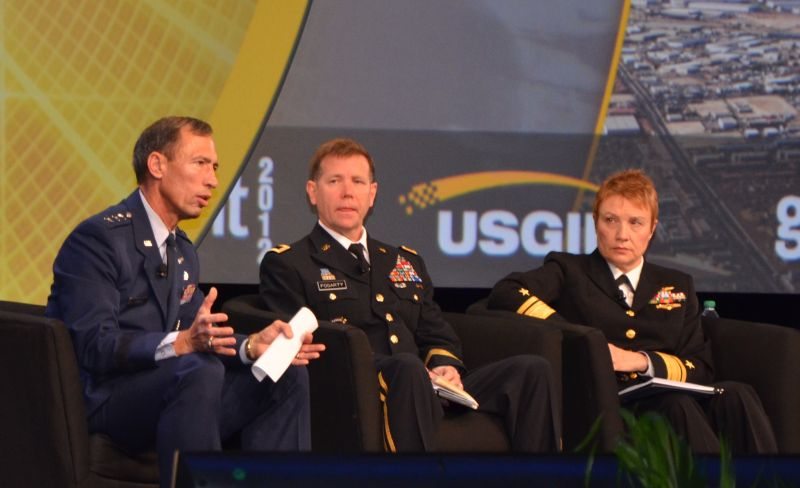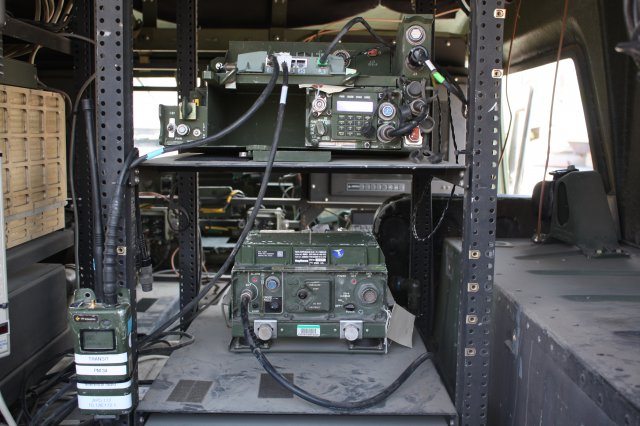In addition to the exhibitions, GEOINT, which is in its ninth year, hosted several keynote speakers, panel discussions and breakout sessions by government, military and private sector leaders.
Lt. Gen. Larry D. James, the Air Force’s deputy chief of ISR, was a featured speaker on the Services Intelligence Chiefs panel. He was joined by Maj. Gen. Steve Fogarty, commanding general of the U.S. Army Intelligence and Security Command; Rear Adm. Sandy Daniels, senior advisor for Space to the Deputy Chief of Naval Operations for Information Dominance; and Phillip C. Chuboda, assistant director of intelligence for the U.S. Marine Corps.
During the panel, James addressed several issues but focused heavily on the Air Force Distributed Common Ground System and its importance. DCGS is a weapon system that produces intelligence information collected from such platforms as the Global Hawk, the Predator and the Reaper.
“DCGS is the heart and soul of how we connect ISR to the warfighter,” the general said. “Quite frankly, it operates from the rear, but we take data and interact with those on the front lines to achieve the mission.”
The system processes nearly 2 petabytes – that’s one quadrillion bytes – per month, which adds up to an enormous amount of data to analyze.
“I’ve always subscribed to the thought that more data is better; we just have to figure out how we can wrap our arms around that huge amount of data,” James said. “Over the last decade we’ve innovated on-the-fly regarding our network operability. Now, under the direction of the Secretary of the Air Force, we must establish how we can make our networks wholly compatible.”
When asked which platform the ISR community preferred for data collection, James said, “We are platform agnostic. If a particular platform answers the question, great. We’ll use it. If not, we’ll look elsewhere to get the information needed.”
In addition to the senior intelligence chiefs’ panel, the director of the Defense Intelligence Agency was also a keynote speaker. Lt. Gen. Michael Flynn discussed the period of transition that the intelligence community – and the Department of Defense as a whole – is in right now.
“We are in a turning movement in our history, and as any NASCAR fan can tell you, the turn is the toughest part of the race,” said Flynn. “The intelligence community is an indispensible element of the military dimension, and our networks are our new weapon systems, with data being the ammo. Intelligence must remain a strategic advantage for our nation.”
Several other noted professionals gave keynote presentations, including James Clapper, director of National Intelligence; Letita Long, director of the National Geospatial-Intelligence Agency; and Gen. Keith Alexander, director of the National Security Agency and commander of United States Cyber Command.
The producer of the symposium, USGIF, is dedicated to the promotion of geospatial intelligence that addresses national security objectives. More than 4,000 people attended the 4-day event with 200 organizations showcasing their capabilities in the exhibit hall.
The 2013 symposium is set for Oct. 13-16 at the Tampa Convention Center.











